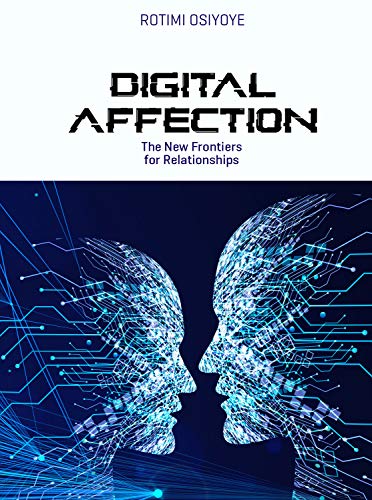Author: Rotimi Osiyoye
Year: 2021
Pagination: 292
My son, in his twenties, asked me sometime ago: “How did guys of your generation cope with dating and sending messages before the advent of technology and social media?”
That and more questions are what Rotimi Osiyoye, author of Digital Affection: New Frontiers for Relationships, answer vividly in his new book. According to him, before digitalisation, falling in love or creating a bond required a face-to-face meeting. In those days, you have to go through intermediaries for your messages to be delivered to your loved ones. But today, meetings and bonds can happen through platforms offered by digitalisation, particularly relationship sites and social networks, which allow people in different geographical regions, different backgrounds, to meet and relate.
Osiyoye tried to illustrate how relationships were before, communication-wise, and the present realities with new technology with old letters and recent digital interactions. A case in point in the book is the relationship between Kay and Scott before digitalisation. It took days for their letters to be written, exchanged, and replied. One partner even died, heartbroken, for lack of quick updates.
Another interesting case study is what Joddie and Chad present. Despite a phone loss by one of the partners, the two friends were able to connect through Facebook. Chatting through Facebook strengthened their relationship. Digitalisation also offered them the opportunity to exchange videos and pictures, talking on phones and bonding better. And it wasn’t until two years that they met!
Meeting physically also presented its own challenges. Mutual jealousies arose from being social media celebrities. They suffered from social media amplified insecurities. Social media made them popular and gave them audiences, but its major drawback was that it made many people have easy access to them. It affected their relationship eventually.
On Page 70 of the book, Osiyoye tells us that love “in the time of the Internet has been kind to some, and not so kind to others, but what is certain is that it has changed the game forever.”
Another interesting “digital soul mates” sampled are Joshua and Yuna. The former, a young software developer, has logged onto PS4 with strong Wi-Fi connection in search of gamers online. Yuna, a Japanese English tutor, logged on later, and gaming started, after which they exchanged contacts and began interactions via calls and messages, leading to 14 months of relationship, though separated by over 13,000 kilometres.
These days, people the world over are finding it more comfortable and perfectly acceptable to say that they found love online, by swiping on an app or through online dating sites.
“There are even more stories like Yuna and Joshua’s, real people who found each other online and are on their unique relationship journeys ignited by a digital spark. In some cases, there is a significant distance between both individuals, and online platforms are the only genuine hope they have of advancing the relationship. In other cases, the distance is not a problem, but their journey still began online,” the author said on Page 75.
The book uncovers the magic of the Internet as an enabler of romance and relationships, which lies in its ability to transform technological chemistry into tangible emotion. The author enlightens us that there is a strong link between the quality of one’s social relationships and one’s wellbeing. Happier people, he says, are found to have well-developed social connections and lives, which allow them to build more meaningful relationships and bonds that present several opportunities for them to live more purposeful, happier lives and even healthier lives.
In chapter four, the book addresses the existence and dangers of finding love on dating apps. You can find love in a second; you can also encounter fake lovers who upload fake profiles to scam you. Beyond dating apps, social media applications, like Twitter, Facebook, and Instagram, says the book, offer people platforms to form genuine connections. “Unless one does not care about what his or her timeline looks like, there is almost no way anyone would allow undesirable content on their timelines,” he writes.
Digital Affection… opens the reader’s eyes to new frontiers for relationships. For one, “Harnessing frontier technologies–combined with the desire to close certain gaps with various forms of relationships in the age that we live in—could be transformative in achieving happier, more successful unions and relationships in the world we live in today. They offer the prospect of possibilities and opportunities for relationships and unions that are better, more real time, cheaper, and in many ways easier to manage and maintain…. However, new technologies are easily viewed as a threat that could outpace the ability of people and societies–especially in the developing world—to adapt to the changes they create, therefore resulting in widespread anxiety” (p. 183).
Does technology make relationships stronger or otherwise? The answer to this can be found in the Chapter Six. Digital Affection… also explores the social dilemma associated with the Internet. The book is a good read about love, communication and its implications. Readers of all ages would find it useful in this rapidly changing digital age.
